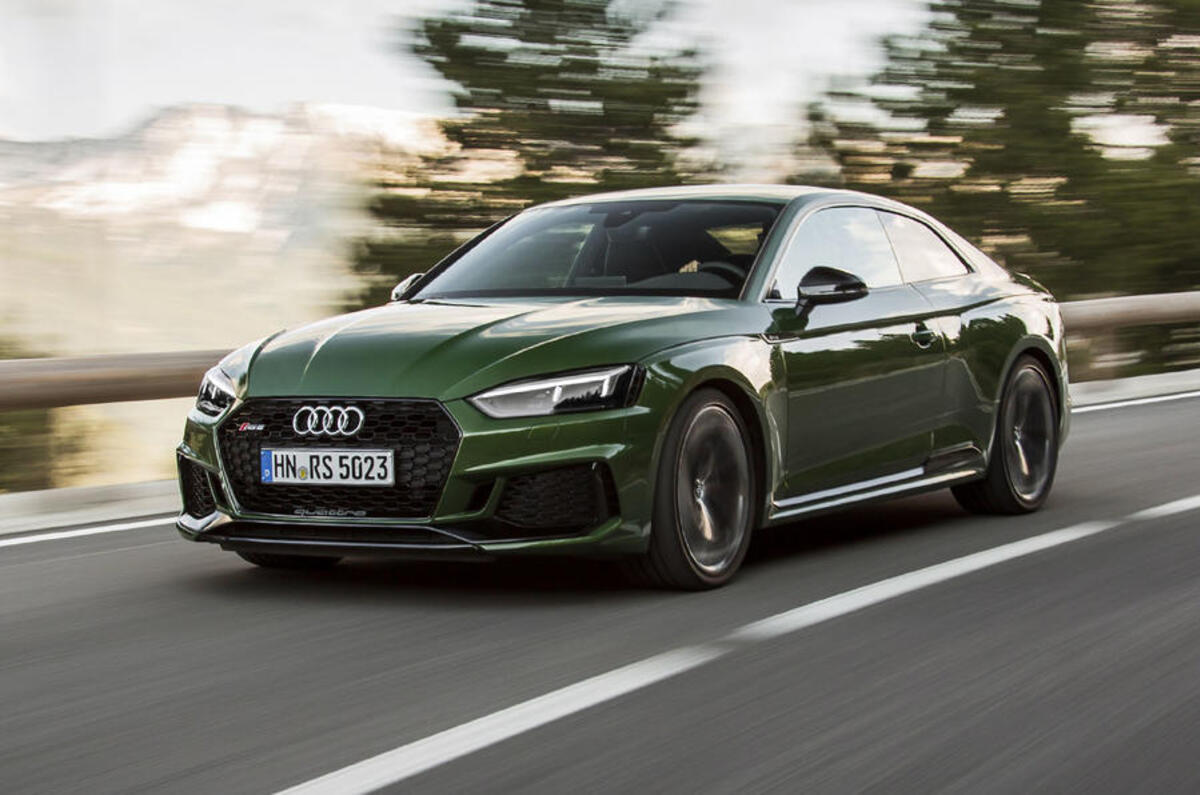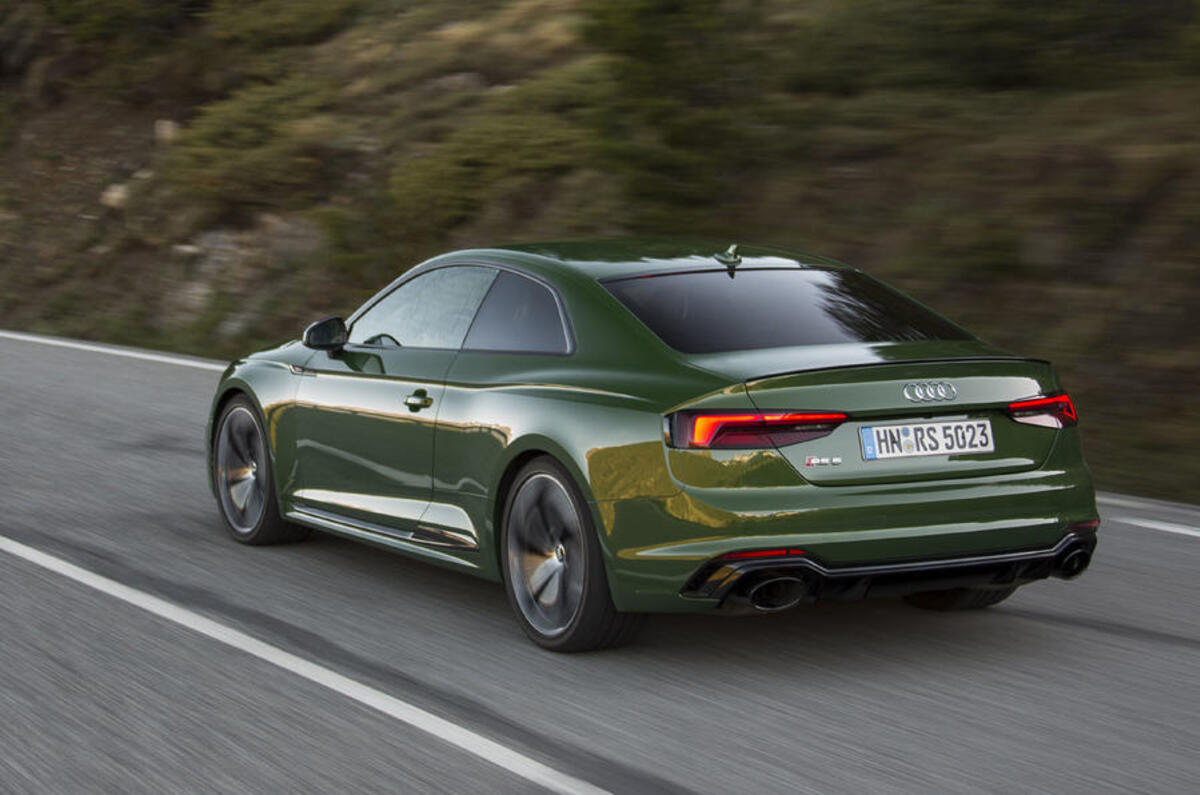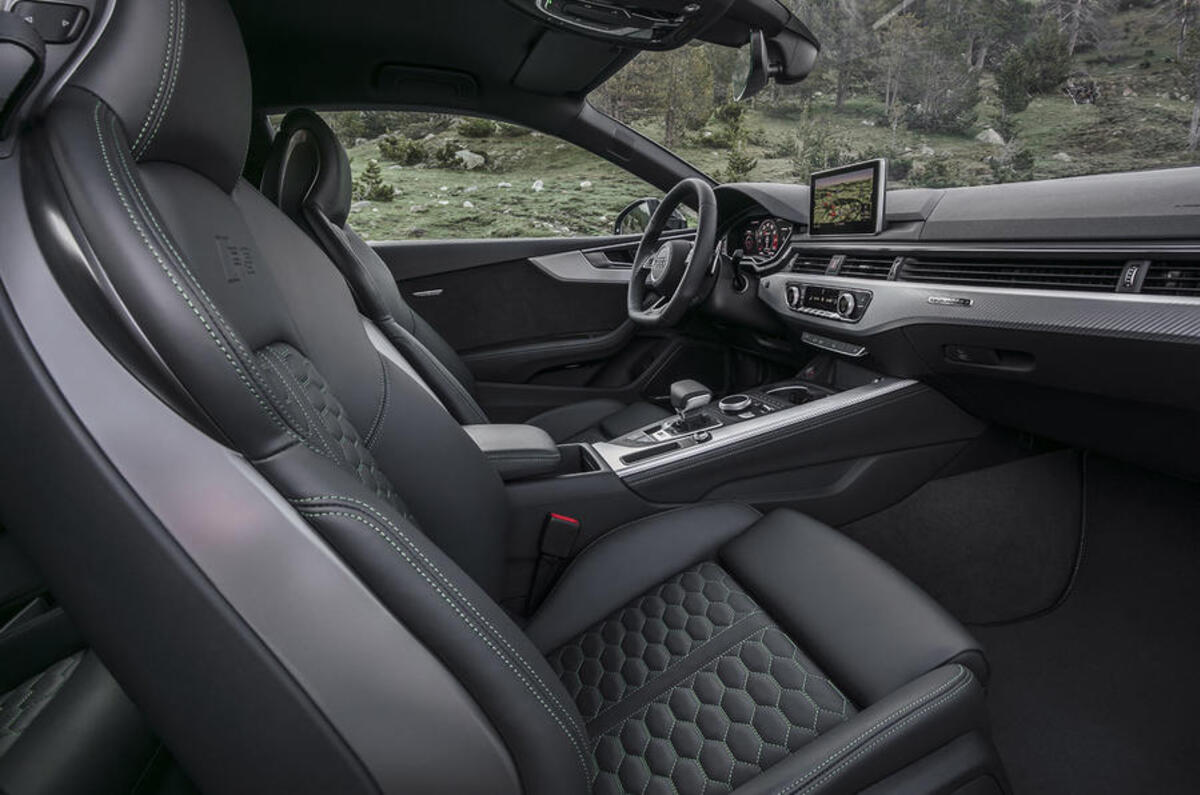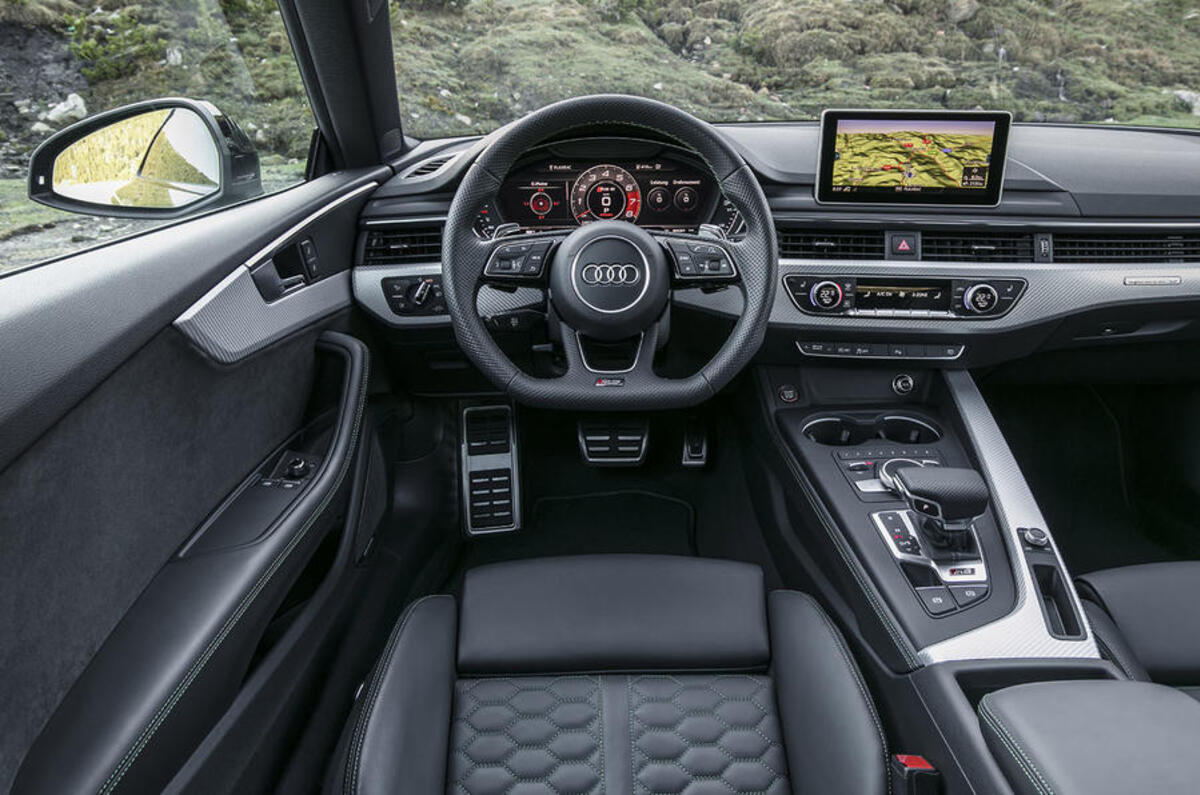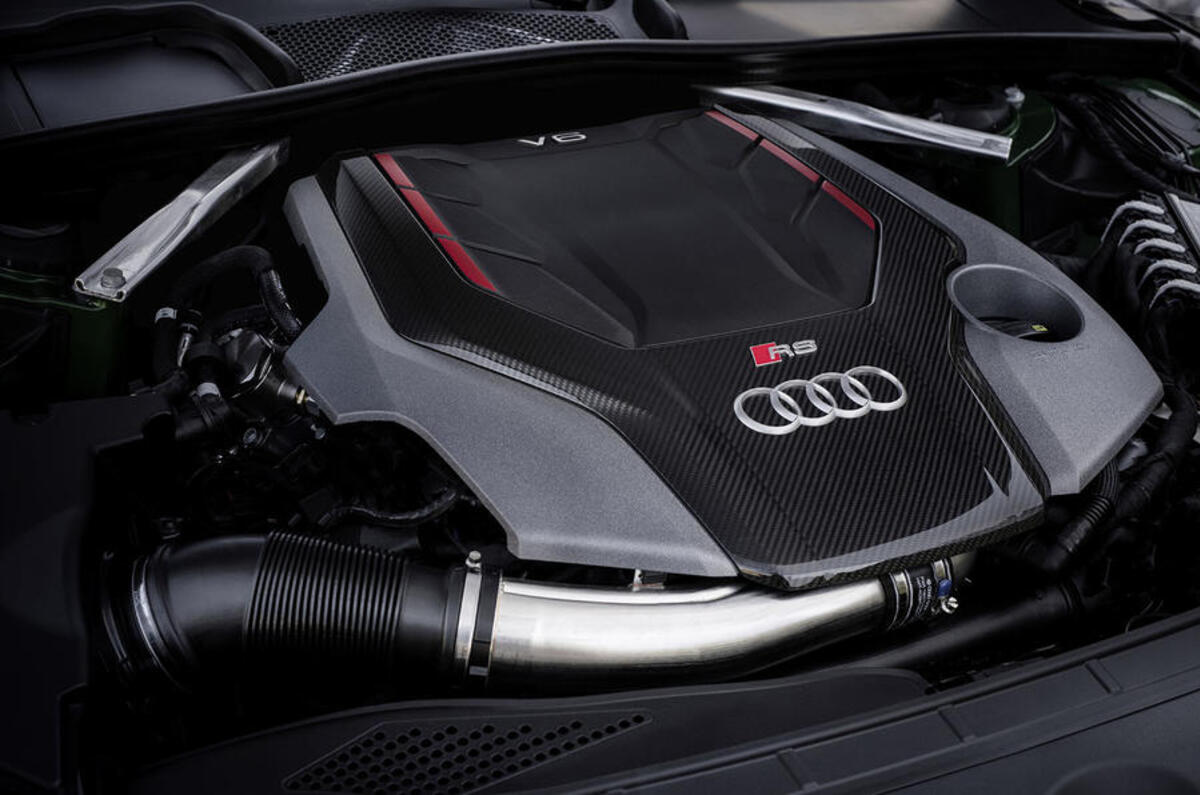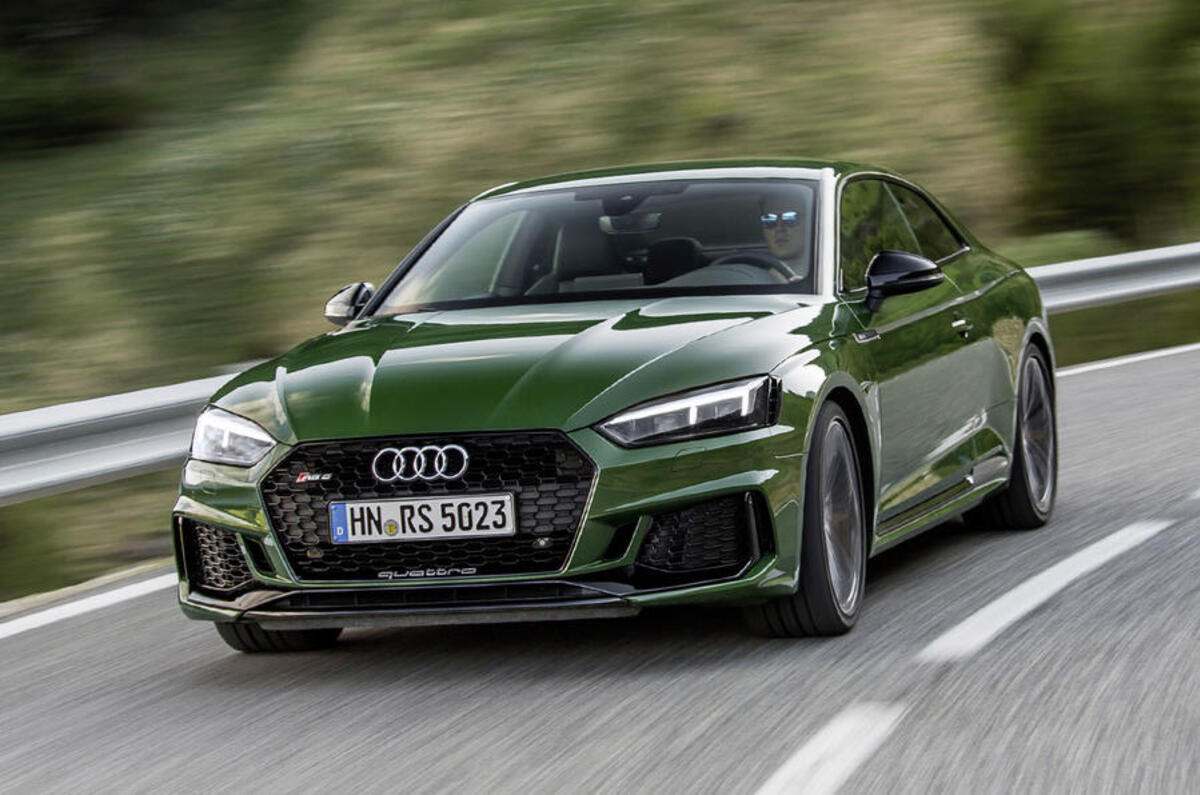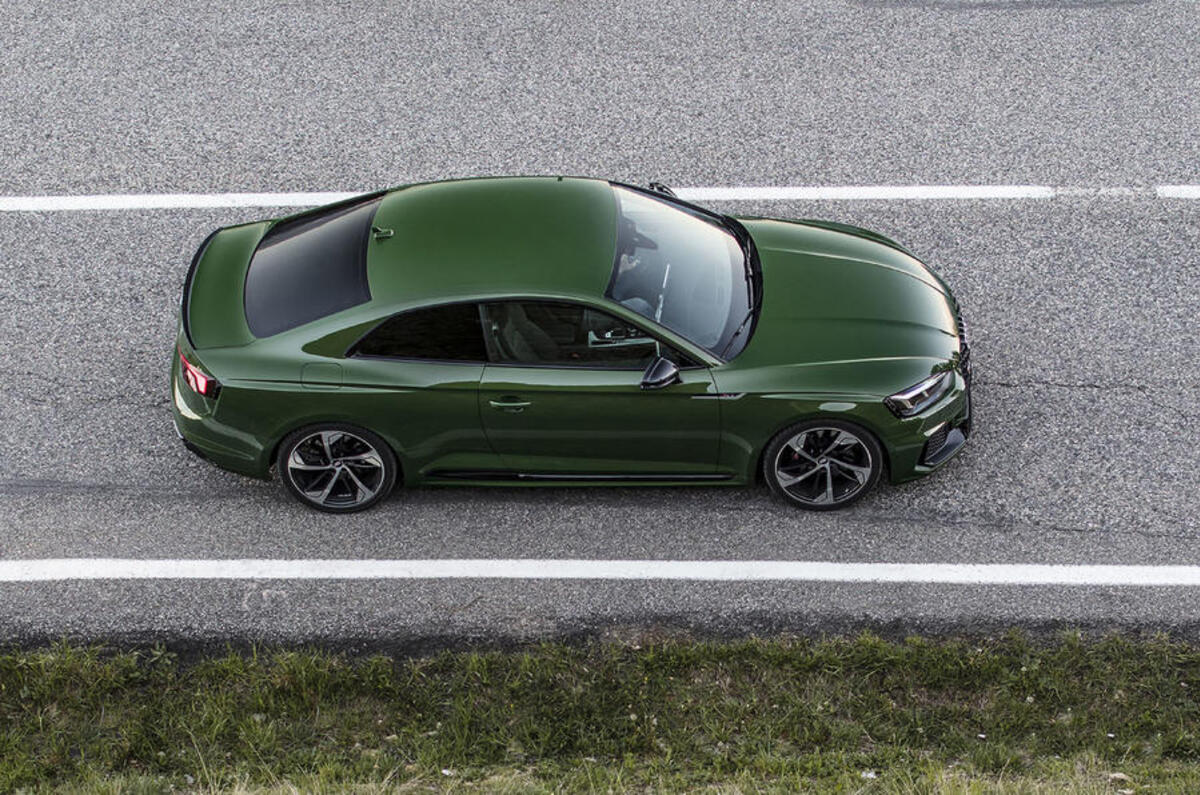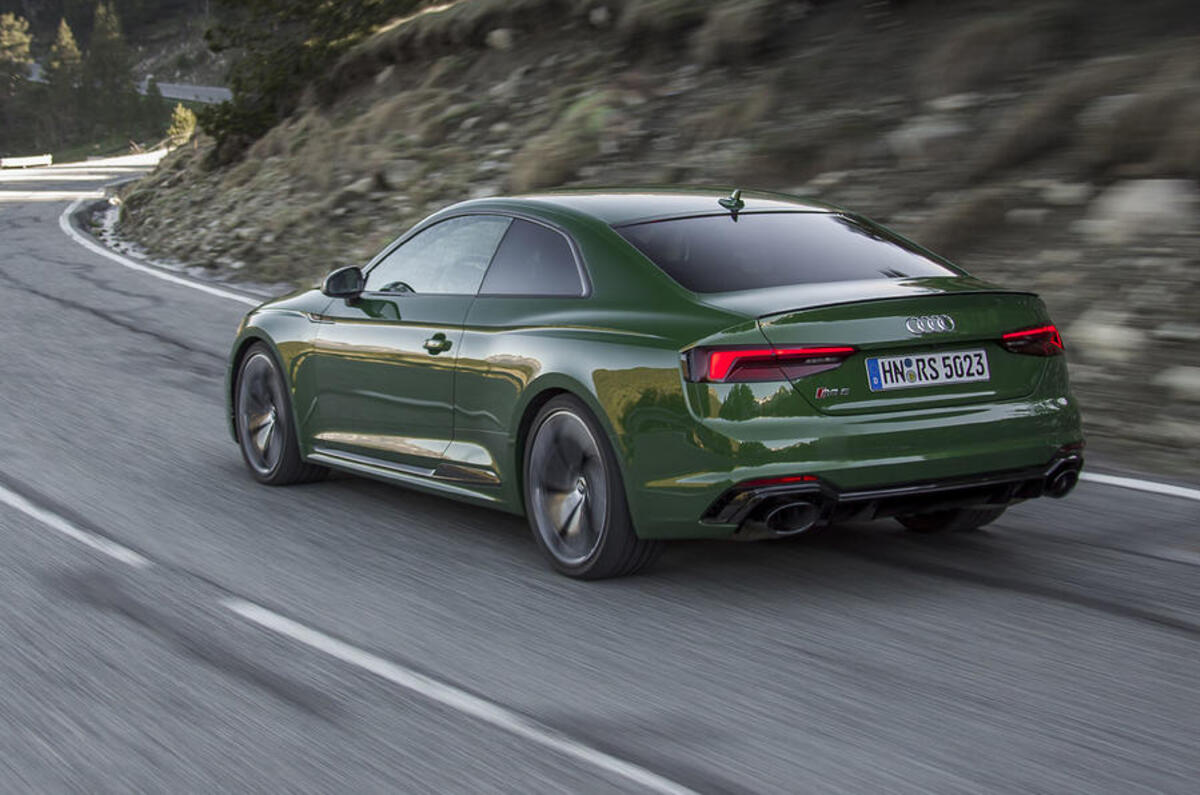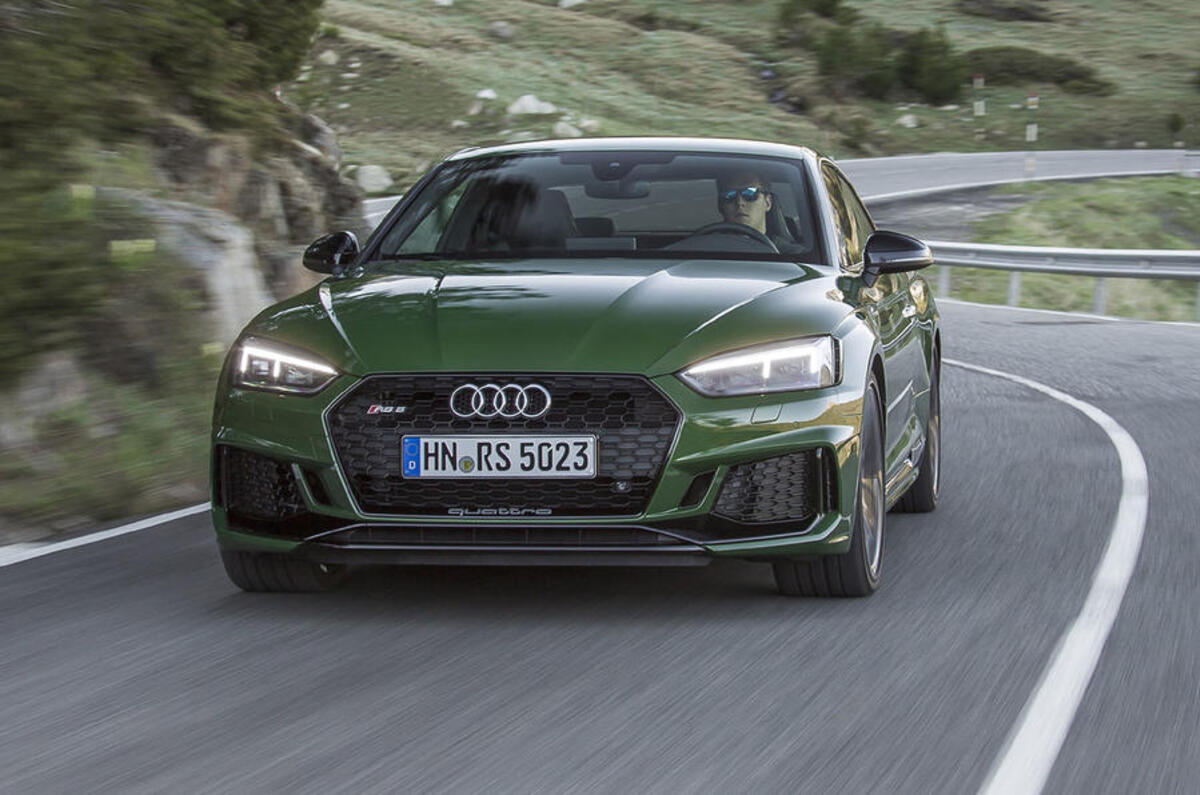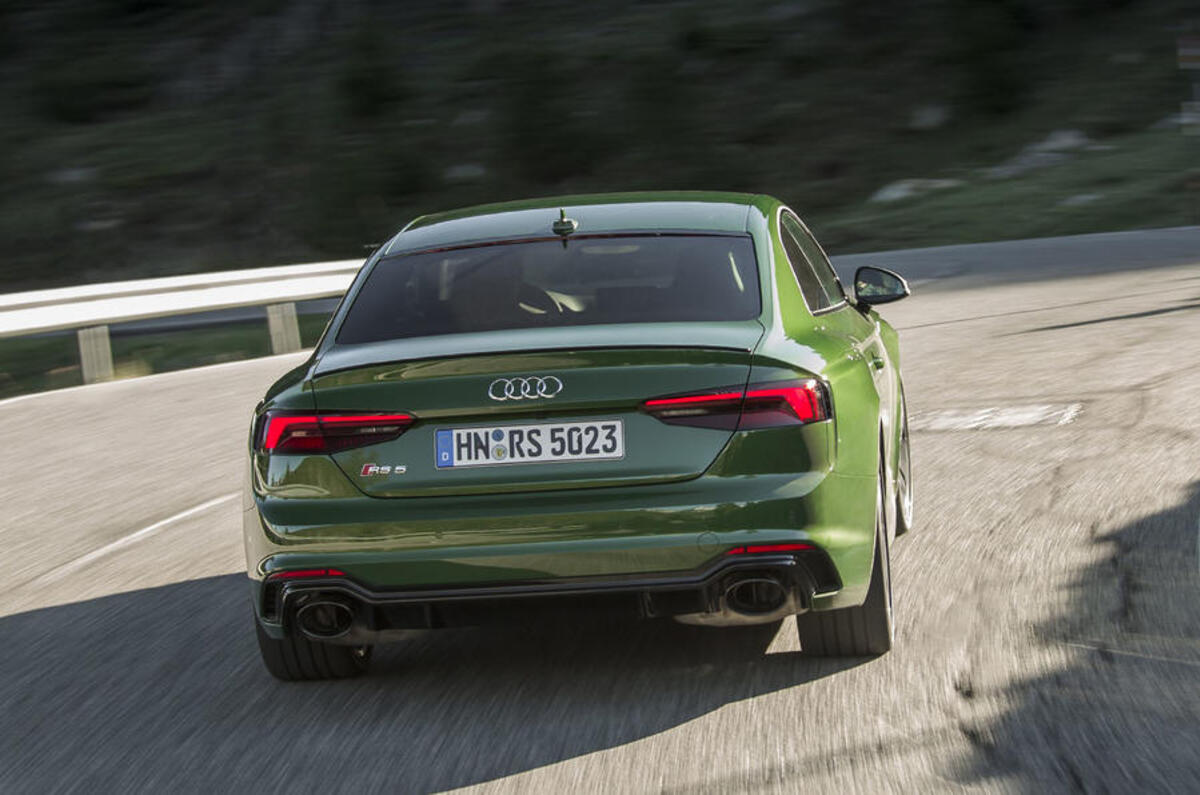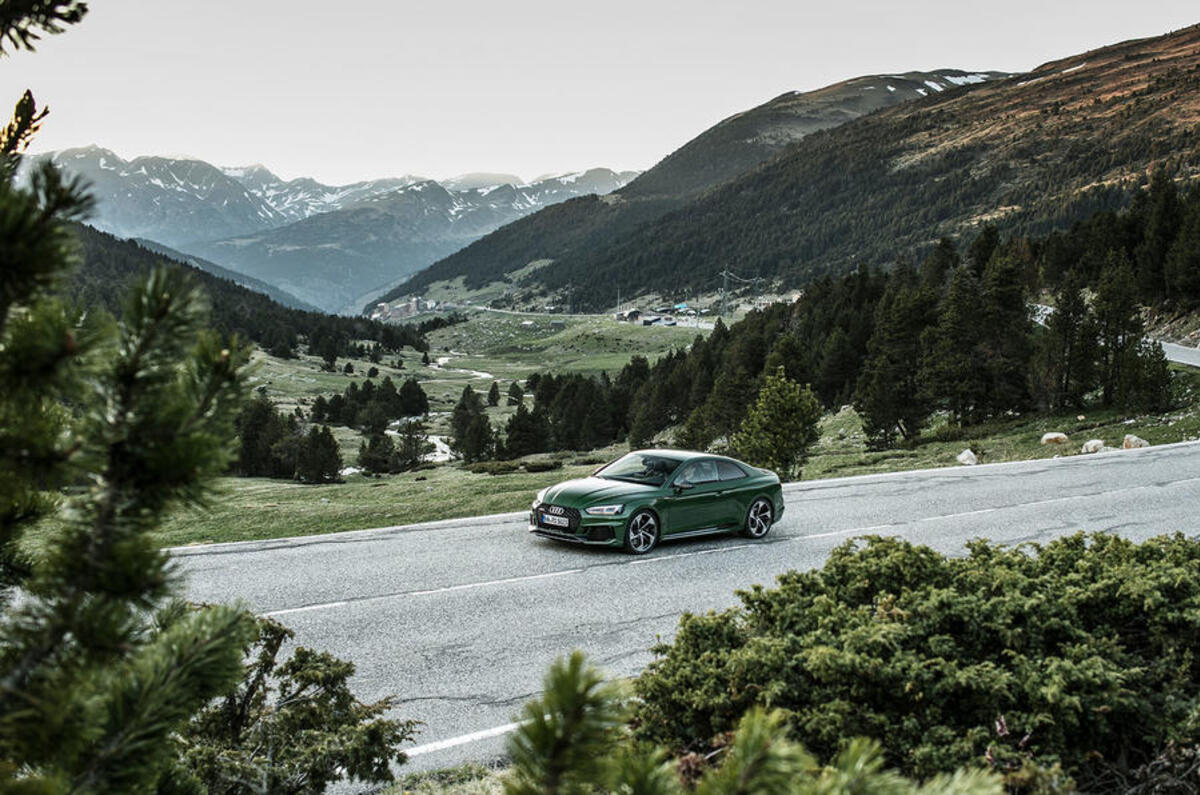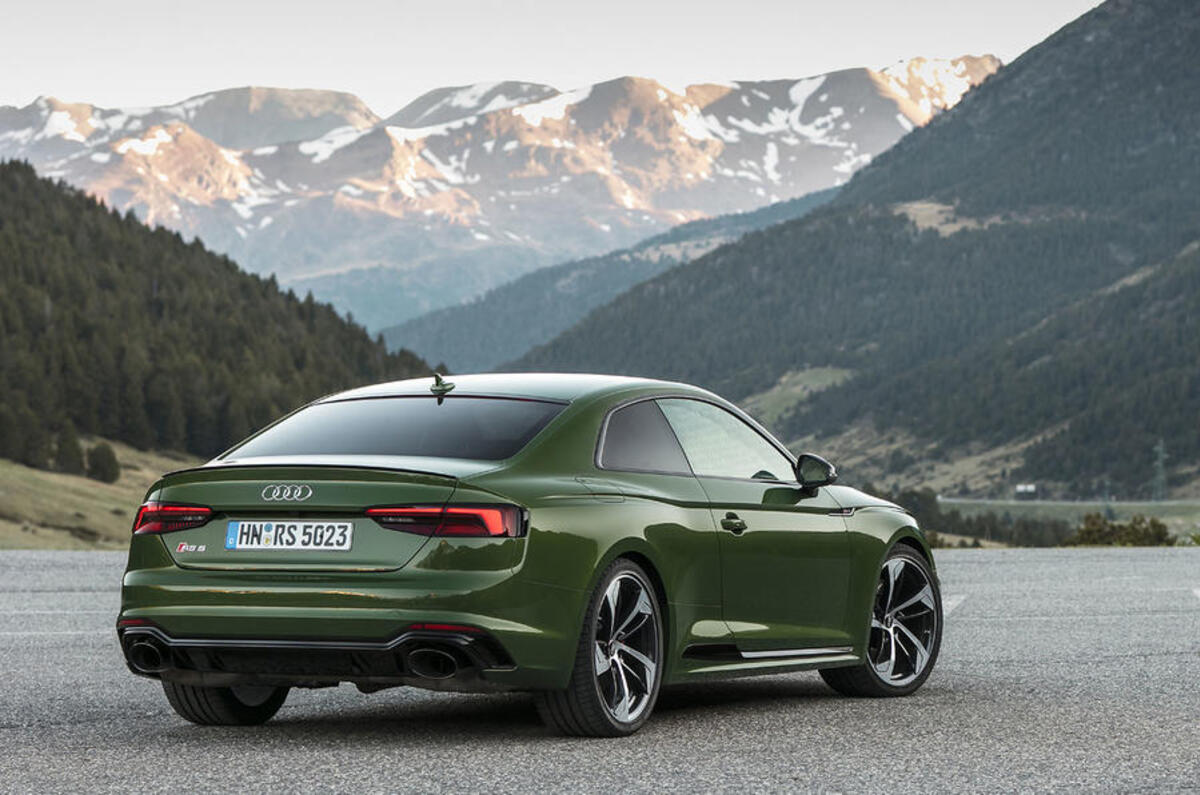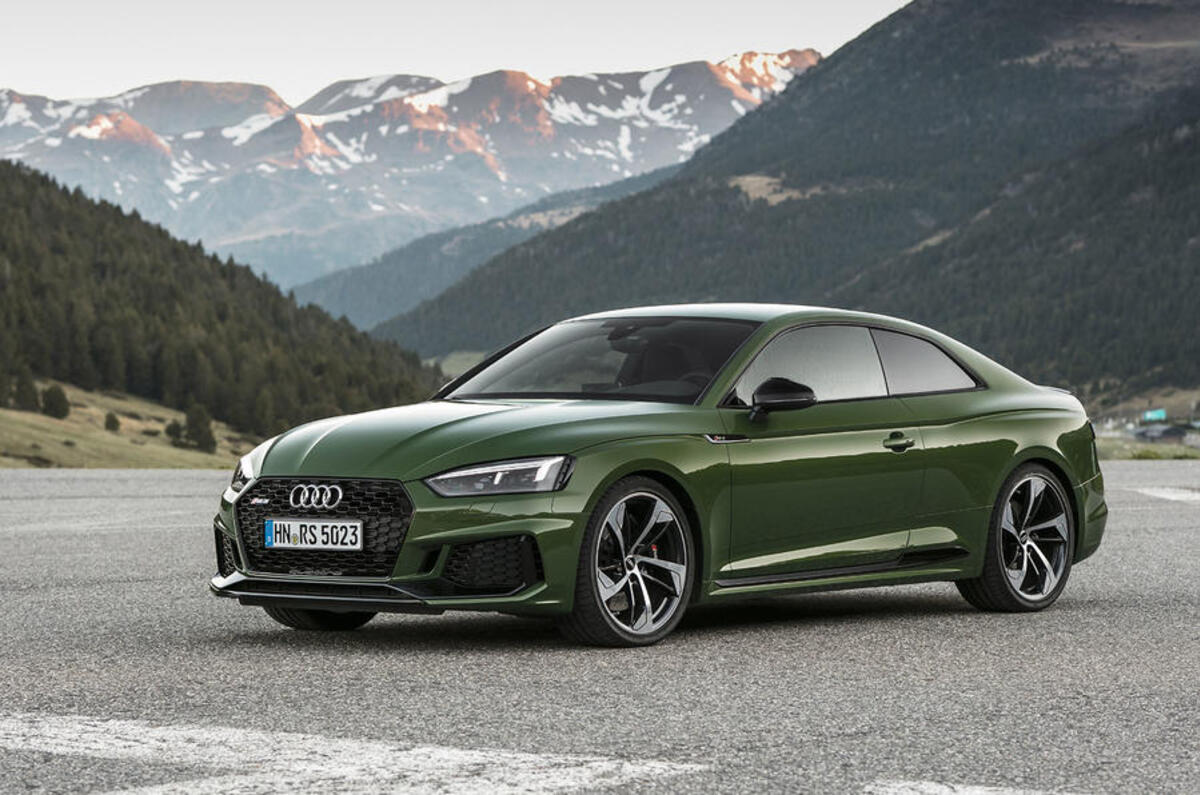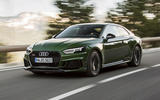The new Audi RS5: larger, lighter, quicker, cleaner and cleverer than the six-year-old model it replaces.
It is most of these things because alongside the latest MLB platform, Audi has finally swapped out the old naturally aspirated 4.2-litre V8 for the cutting-edge 2.9-litre twin-turbocharged V6 it has spent the last few years co-developing with Porsche.
Naturally, its superior numbers in almost every facet count as reasons to be cheerful – but history dictates caution here, and no little regret.
The previous unit was far more than just a tightly wound bundle of numbers; it was arguably one of the last great atmospheric engines, with a throttle response to die for and the kind of lean, caterwauling soundtrack that effectively had your vein spiked at 8250rpm.
We’d therefore be remiss not to sound a rhetoric last post at its departure and neon signpost the fact that it was easily the best thing about the last model, which fit Ingolstadt’s starchy stereotype about as accurately as a Paulaner brewer fits into lederhosen.
Broadly speaking, the old RS5 was too heavy, too anti-engagement and, over time, too obviously overawed by its rear-driven rivals from BMW and Mercedes.
The differences between new and old Audi RS5
A couple of the new car’s modifications, then, are notable out of the gate. It's lighter by 60kg in its regular format (thanks mostly to the 31kg-lighter V6), and UK examples get the mechanical rear Sport differential as standard to better compliment the quattro all-wheel-drive system and wheel-selective torque control.



